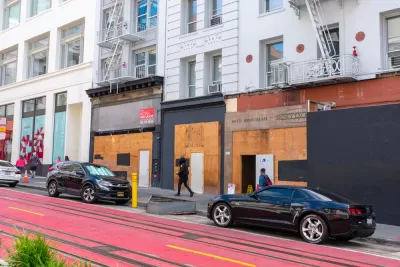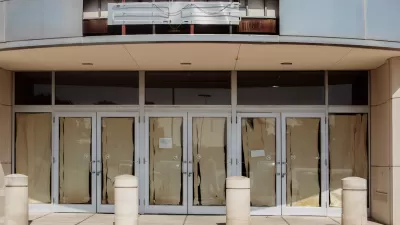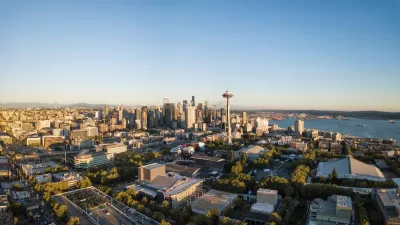As commercial storefronts experience high vacancy rates, cities like Oakland and San Francisco are making concerted efforts to support temporary tenants, public art installations, and small entrepreneurs that can revitalize abandoned spaces.

As stories from around the country attest, the last two and a half years accelerated a hollowing-out of central business districts in many U.S. cities. Regardless of how quickly the pandemic officially ends, writes John King in a paywalled article in the San Francisco Chronicle, “What cities and building owners must do now is find intriguing, inventive ways to plug holes on a short-term basis — so that today’s terrain of ‘for rent’ signs doesn’t become a permanent blight on too many urban blocks.”
King argues that “Cities need to find ways to prime the pump, and facilitate new types of ongoing activities within otherwise vacant ground floor spaces.” Kate Sofis, director of the San Francisco Office of Economic and Workforce Development, agrees. As King writes, “One promising initiative comes out of Sofis’ office: ‘Vacant to Vibrant,’ which would allocate $750,000 in the 2022-23 city budget to ‘pairing property owners with artists and small businesses who can use the space for short term activations.’”
King imagines even more possibilities: “Imagine if civic or cultural institutions committed to programming a year of exhibitions in a spacious storefront near Salesforce Tower, one after the other, each showcasing a niche within their collection.” Or “City Hall itself could commit to a storefront that would function as a service center — an easy spot for residents to get assistance face to face.”
“It also makes sense to loosen the definition of what is allowed along could-be-busy sidewalks,” King writes, pointing to the city of Oakland’s experiment in doing just that. Across the bay, “San Francisco’s proposed budget next year includes $2.5 million for special events and streetscape improvements in what the city calls the ‘economic core.’ The goal: to ‘draw a wide range of both business and leisure visitors over the course of a week.’ And give them a reason to stop by more than once.”
FULL STORY: Can pop-ups save downtown San Francisco? How Bay Area cities are trying to revive empty storefronts

Planetizen Federal Action Tracker
A weekly monitor of how Trump’s orders and actions are impacting planners and planning in America.

Congressman Proposes Bill to Rename DC Metro “Trump Train”
The Make Autorail Great Again Act would withhold federal funding to the system until the Washington Metropolitan Area Transit Authority (WMATA), rebrands as the Washington Metropolitan Authority for Greater Access (WMAGA).

The Simple Legislative Tool Transforming Vacant Downtowns
In California, Michigan and Georgia, an easy win is bringing dollars — and delight — back to city centers.

The States Losing Rural Delivery Rooms at an Alarming Pace
In some states, as few as 9% of rural hospitals still deliver babies. As a result, rising pre-term births, no adequate pre-term care and harrowing close calls are a growing reality.

The Small South Asian Republic Going all in on EVs
Thanks to one simple policy change less than five years ago, 65% of new cars in this Himalayan country are now electric.

DC Backpedals on Bike Lane Protection, Swaps Barriers for Paint
Citing aesthetic concerns, the city is removing the concrete barriers and flexposts that once separated Arizona Avenue cyclists from motor vehicles.
Urban Design for Planners 1: Software Tools
This six-course series explores essential urban design concepts using open source software and equips planners with the tools they need to participate fully in the urban design process.
Planning for Universal Design
Learn the tools for implementing Universal Design in planning regulations.
Smith Gee Studio
City of Charlotte
City of Camden Redevelopment Agency
City of Astoria
Transportation Research & Education Center (TREC) at Portland State University
US High Speed Rail Association
City of Camden Redevelopment Agency
Municipality of Princeton (NJ)





























